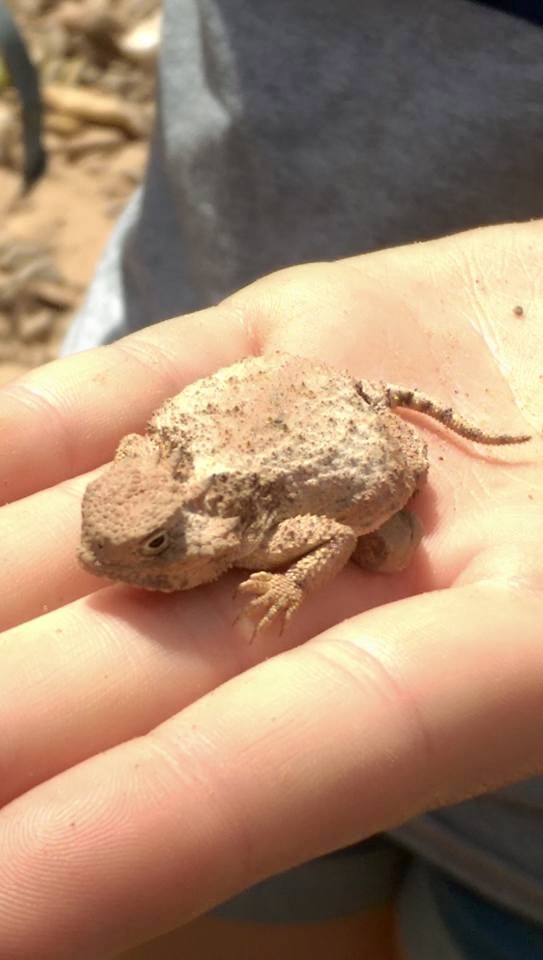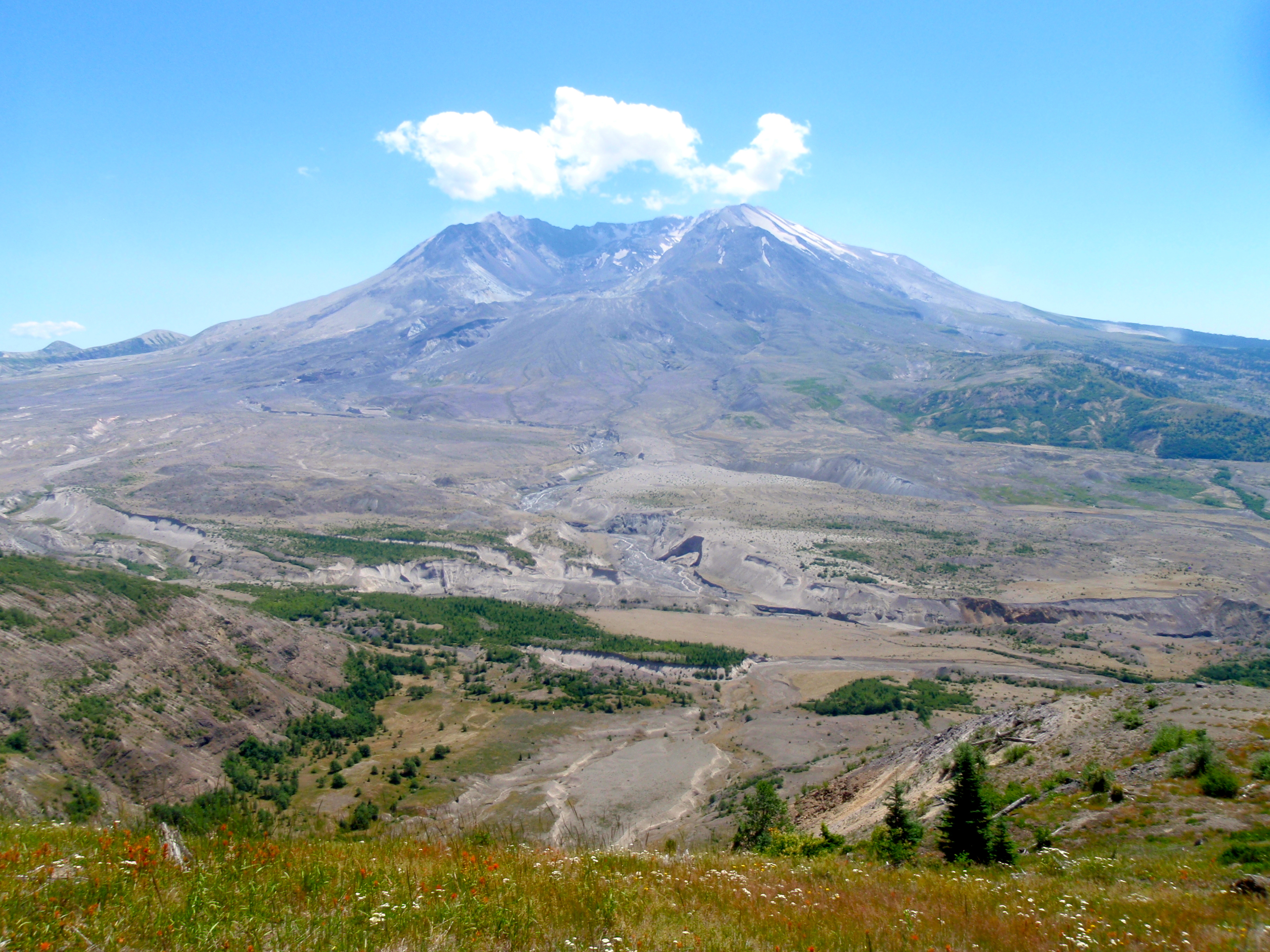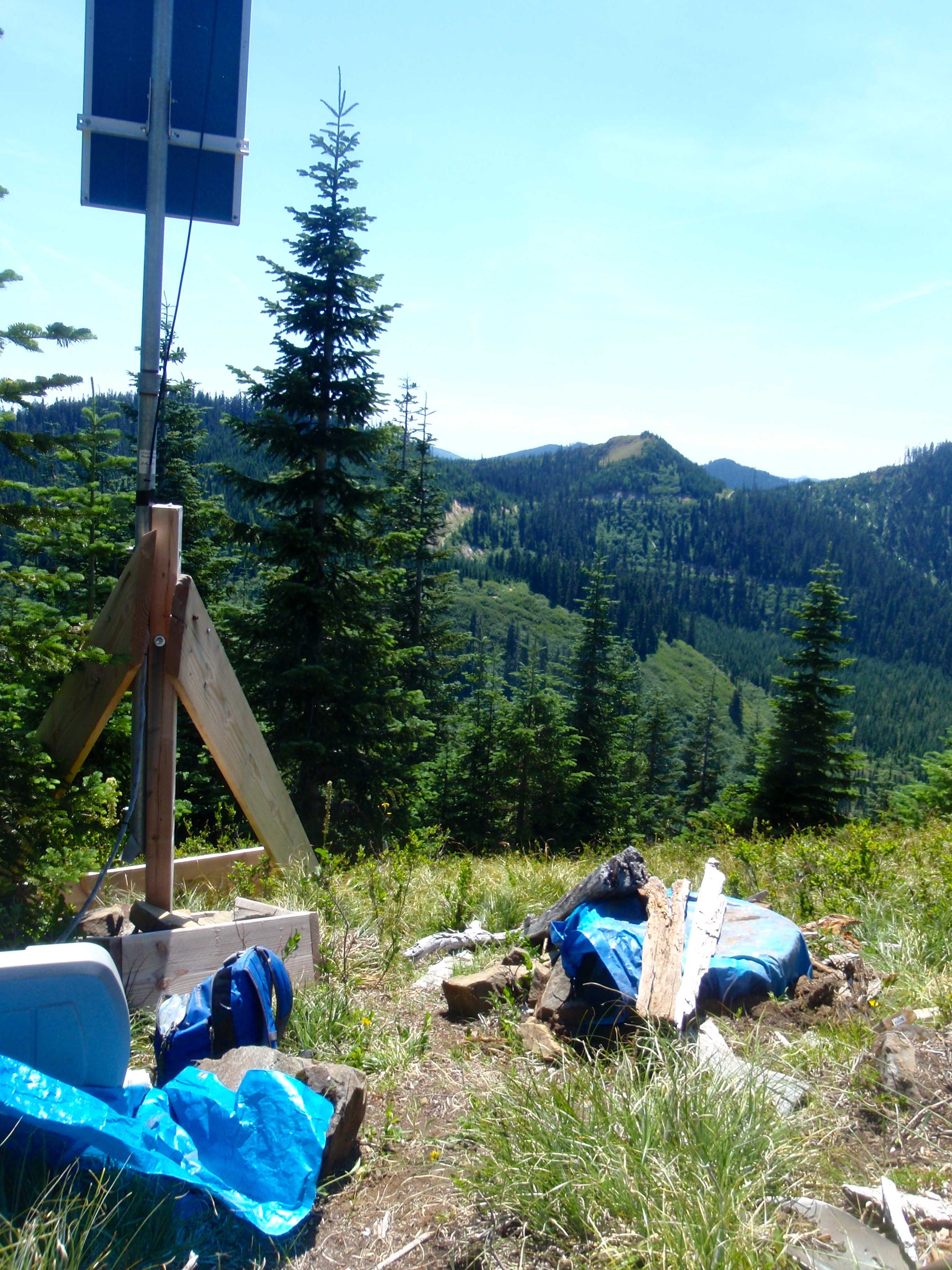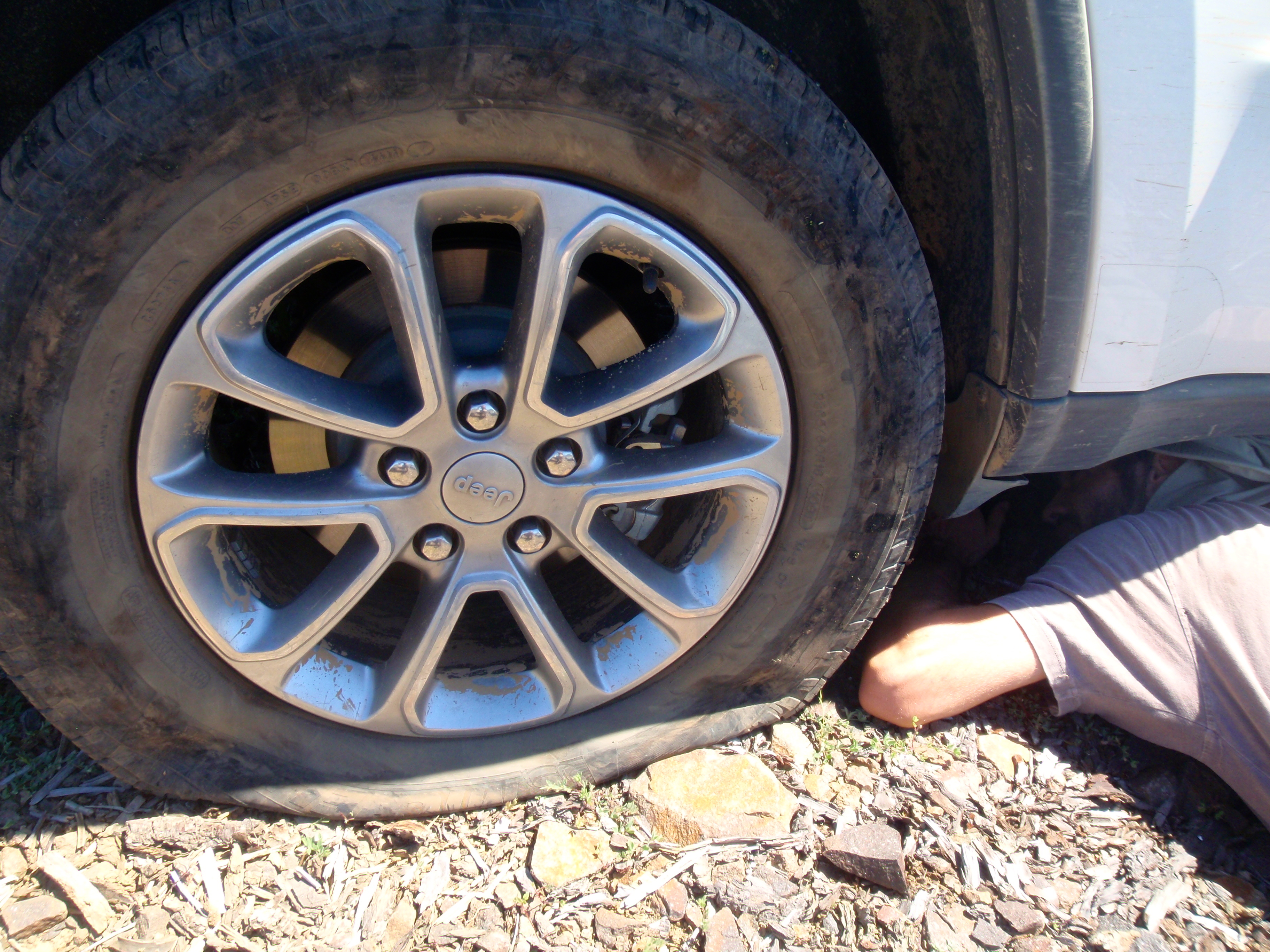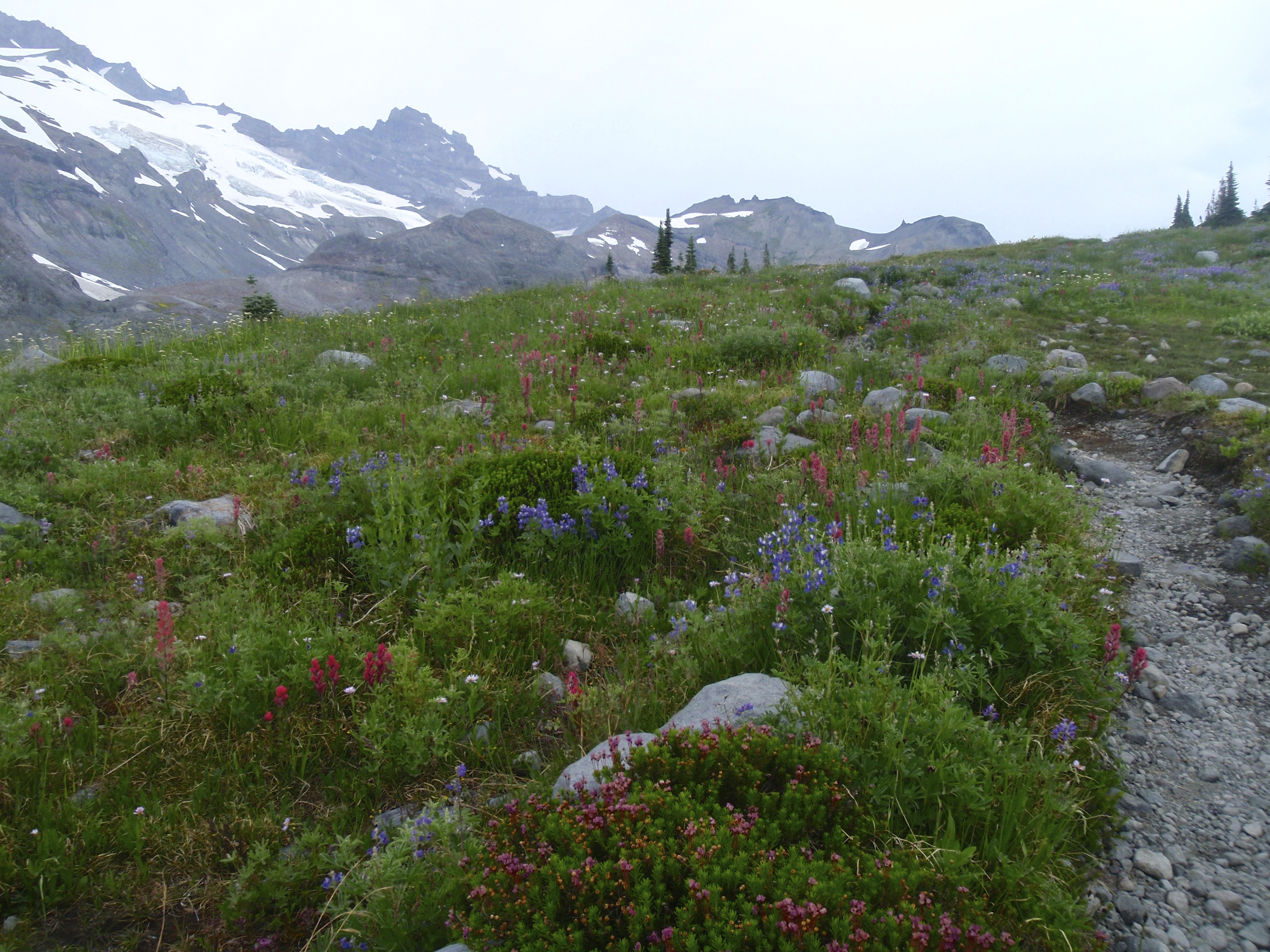Hannah Krueger
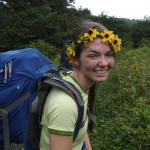
Hannah Krueger is a student at Appalachian State University currently completing her research at University of Washington under Dr. Erin Wirth.
The crustal structure along Cascadia subduction zone is poorly constrained because seismic activity along the subducting Juan de Fuca slab is very quiet, limiting shear wave splitting analysis of the area. To better constrain this structure, we are using receiver functions to investigate along-strike variations in crustal anisotropy of the Cascadia subduction zone with data from 9 broadband seismic stations west of the Cascades. Additionally, a new method of performing shear wave splitting on episodic tremor and slip (ETS) has arisen to overcome the lack seismic activity in Cascadia. Interpretations of receiver functions in Cascadia can also serve as a comparison for this new method. Along the Pacific Northwest (within the stretch of our stations), 3 areas of different ETS periodicity have been identified, suggesting possible variations in subsurface geology. If these periodicity shifts correspond to geologic variations, it is possible we will see changes in crustal anisotropy at these locations as well.
Blog 6: Starting interpretations and thinking about AGU
July 20th, 2015
It just hit me this week that I only have 3 weeks left in Seattle! What a bummer! I still feel like I have so much more I want to do both with my research and exploration of Washington. The big thing that I haven’t gotten a chance to do yet is see a whale, but it sounds like a might have a chance to do that in the next weekend or two! I’m really going to miss the great friends I’ve made, the beautiful weather, and the rowdy dancing, so I’ve got to make the most of these next few weeks.
The research I am doing has progressed to the point that I have a good picture of where I will be by the end of the summer and what I will be presenting at AGU in December. We’ve completely gotten our receiver function results and have been able to point out major/obvious structures in them, such as the Moho and the dipping subducting slab. I am currently working on forward and inverse modeling of our results to help with interpretations of crustal structure. With an approaching AGU abstract deadline, the contents of our presentations are on all of our minds, so here is a very basic outline of the contents of my AGU poster:
Outline of poster:
Abstract:
In the works! Here’s an outline
Motivtion/Problem:
-Poorly constrained crustal structure because shear wave splitting limited, so we do not have a good understanding of sub zone structure
-ETS shear wave splitting is new method, but no way to test if it is correct, so this provides a comparison
Methodology:
-Receiver functions on 14 long-running broadband stations.
-multi taper stacking
-Forward and inverse modeling to decipher dip, interface velocity changes, and anisotropy
-Comparing results with 3 seconds of ETS – do they correspond?
Results:
-??
Implications:
Goal: To use receiver function from stations along the Cascadia subduction zone to better constrain crustal structure.
Background/Methods:
-simple
-Papers/previous work: Nikulin et al.,
-Explain how we use RFs to look at anisotropy
-p to sv conversions at interfaces, also p to sh present if interface is dipping or has anisotropy
-Give example of very simple sample RF made with fwd modeling code
Data/Results:
-Station map with stations, slab contours, and ETS delimiters
-Best RFs – Northern (NLWA, GNW), Middle (MEGW, BUCK), Southern (WDC)
-Note major features in RFs
-Modeling information and results with figures and explanations
Conclusions:
Acknowledgements:
Works Cited:
Blog 5: iMUSH fieldwork
July 14th, 2015
Last week Mitchell and I returned from 12 days of fieldwork! We were collecting data for Mitchell’s project, which is called iMUSH (Investigating Magma Under St Helens). The project is working to image the magma structure beneath Mt St Helens. To learn tons about it, you should all visit this great website: imush.org. We had beautiful field sites with views of Mt St Helens, Mt Rainier, Mt Adams, and Mt Hood. Some even had views of all of them from one spot!
Here's a picture of the main lady with 35 year old landslide wreckage at her feet:
The trip was a success, although not without many literal and figurative bumps in the road. We were able to get to and successfully service 69 of the 70 total seismic stations in the iMUSH array and they were all left in working order!
Here is are examples of seismic stations with great views:
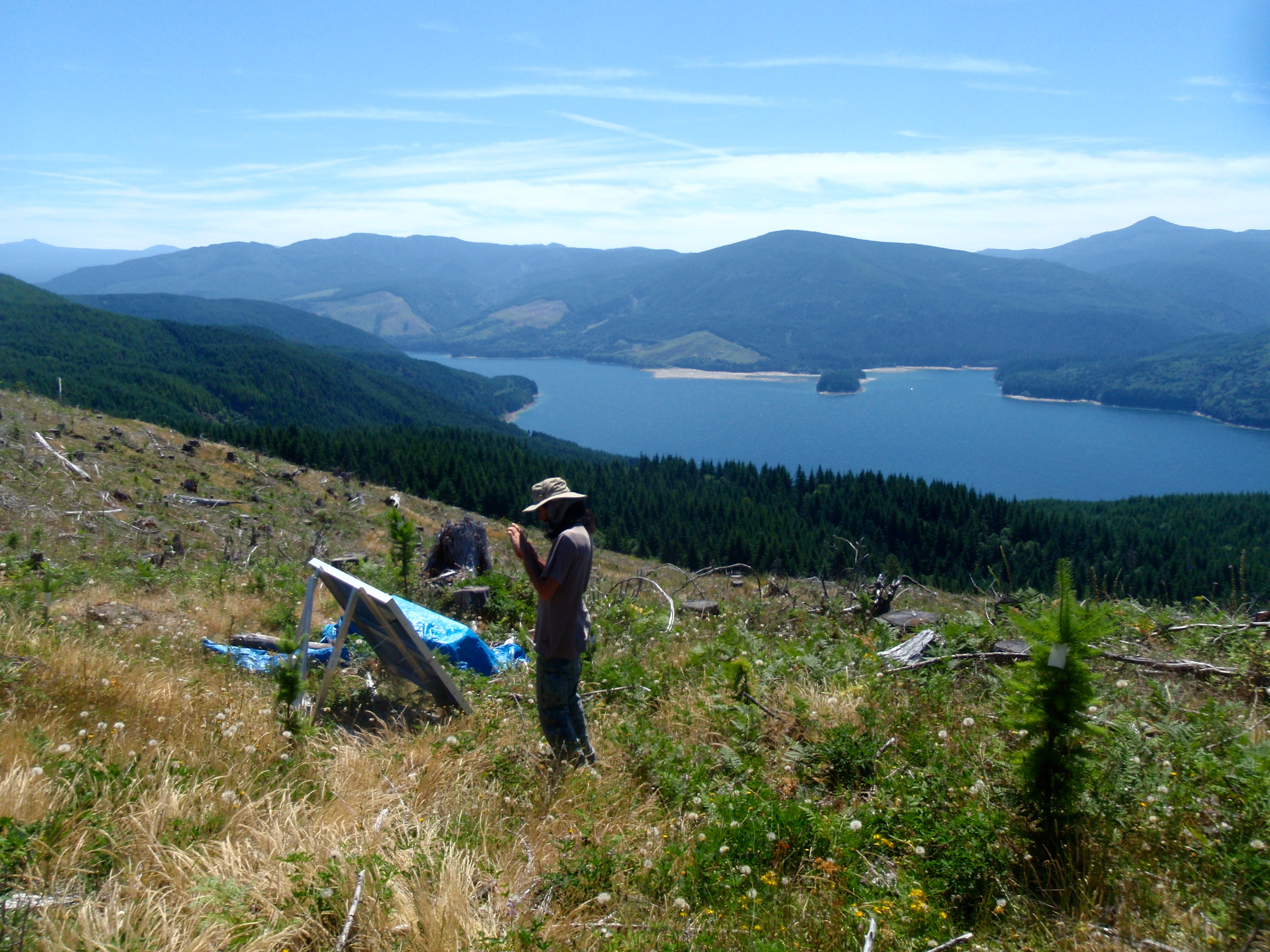
During the trip, we had one car ( a Jeep no less!) that had a flat on 3 of its 4 tires! Safe to say that learning to change a flat was a necessity this trip – not quite as cool as Nealey’s pictures with planes! We spent hours each day driving to isolated sites just to get a flat and have to turn around and leave before even being able to service the site. It was very frustrating.
Mitchell and I changing a flat tire (notice the size of the pieces of gravel that made up the road):
Geoff Abers (a seismologist at Cornell) led the trip and was accompanied by his graduate student, Kayla, and his son. We left to service stations every morning in groups of two or three, but switched groups every day, so we all got to know one another very well!
Kayla stayed with me until her Saturday flight, so we had a chance to go dancing and visit the beautiful wildflowers that are covering Mt Rainier before she left.
Wildflowers on Mt Rainier:
Kayla and I with Rainier in the background:
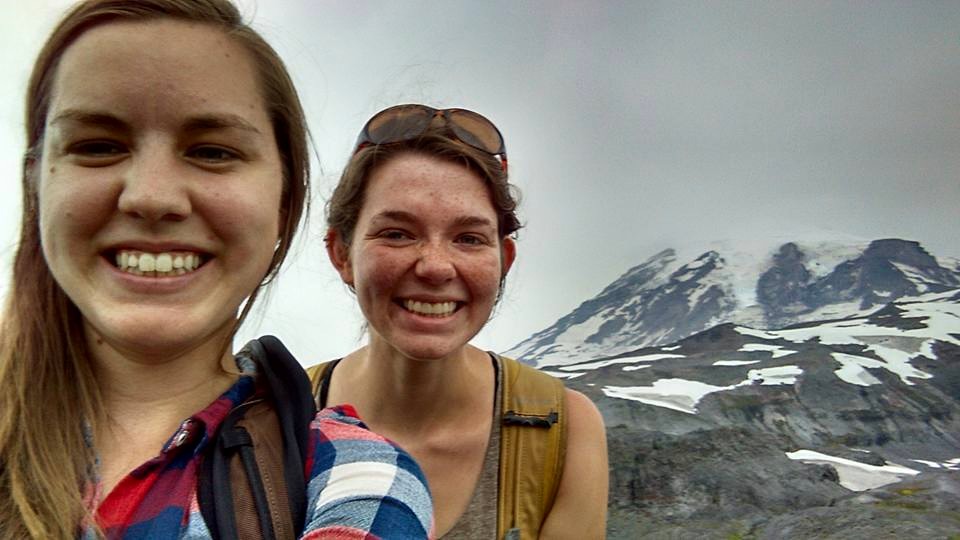
Blog 4: Playing catch up
July 14th, 2015
This summer’s research has provided many obstacles that all have their own little enjoyable challenge to overcome, such as finding the concentration to read research paper after research paper and troubleshooting when data analysis doesn’t work the way it’s supposed to. Figuring out how to fix wonky sites during fieldwork was also quite the learning experience, but it ended in success with us visiting 69/70 sites and leaving all of the ones we visited in working order!
One of my most frustrating obstacles is getting used to gmt 5 and having to fix every code I use to adjust from gmt 4 to 5. Here is one homework assignment where I had to make these adjustments:
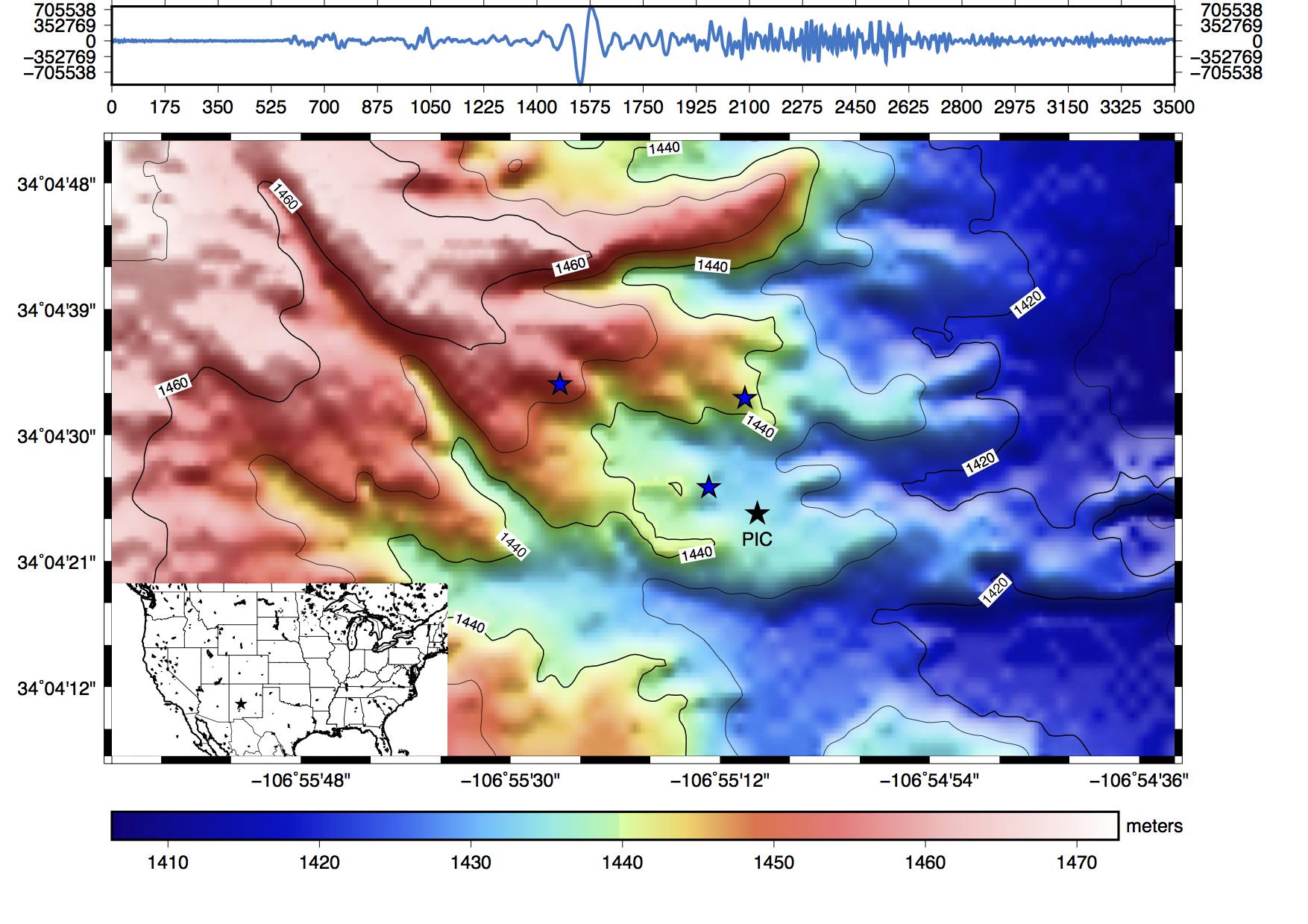
The hardest real challenge I’m facing right now is getting back into research after returning from 12 days of fieldwork. Coming back and having to get all of my affairs in order has been incredibly frustrating (especially since I’m constantly mixing up east coast and Pacific time!). Honestly, my biggest success right now is that today I am actually organized and I have time to sit down and work!
Independence
June 19th, 2015
In the past week I feel like I’ve really made some headway in my research! I’ve computed receiver functions for all of my stations, but some of them look a little crummy so I’m going to re-pick p-wave arrivals to see if that’s where the issue is from. Here is an example of one of my non-crummy receiver functions:
Here is a picture of the stacked radial (left) and transverse (right) components of receiver functions for one of my stations called BUCK. Back azimuth (degrees) is on the y-axis and time (s) after p-wave arrival is on the x-axis:

Mitchell finally came to Seattle this weekend! Before he even had a chance to start his research, we headed out to get our first taste of iMUSH fieldwork (investigating magma under St Helens). The stations we serviced were quite the learning experience (we had to replace the DAS and power box on one of them) and the views were incredible. We climbed to one ridge where we could see Mt St Helens, Mt Rainier, Mt Adams, and Mt Hood from one spot!
Here is a picture I took on the walk down to one of the stations we were servicing Monday:
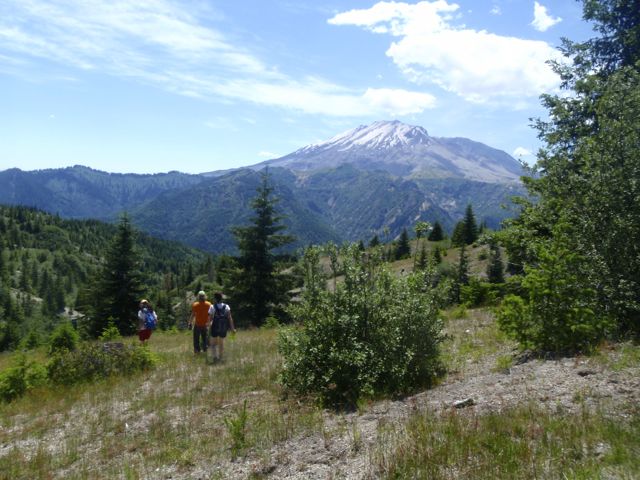
As you may have figured out from other posts, there is a theme this week: Independence. I have, like most people I think, been hoisted, sometimes against my will, into situations that prompted all of my major advances in independence. There are examples of these, such as going off to college, that all of us have experienced as well as more personal examples. Now that push is the opportunity IRIS has given me that is requiring me to live, work, and commute in a city where I did not previously know anyone. This summer is a big step in my personal process of learning how to live at my own pace, while still being productive and happy. This is certainly assisted, but not avoided, by having a great mentor, Mitchell’s arrival, and a wonderful couple to stay with.
Week 2: The Troll under the Bridge
June 12th, 2015
Over the weekend I got to explore some of the districts of Seattle (each district is the size of Boone!). I got to see the original Starbucks, Pikes Place market (although I was too short to see the fish being thrown), and the giant troll under the bridge in Fremont.
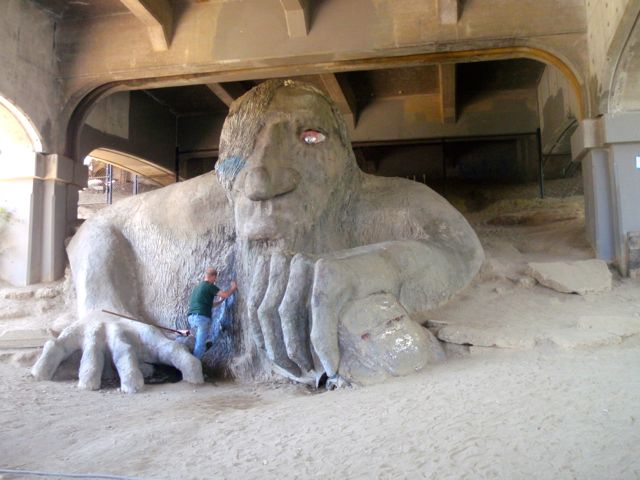
This week has consisted of a lot of downloading new software for data processing, but I’ve finally started really working with data! I’ve pick p wave arrivals for one of my stations and I’m about to start performing receiver functions on it!
Here is an example of a seismogram plotted in python while I was quality controlling the data:
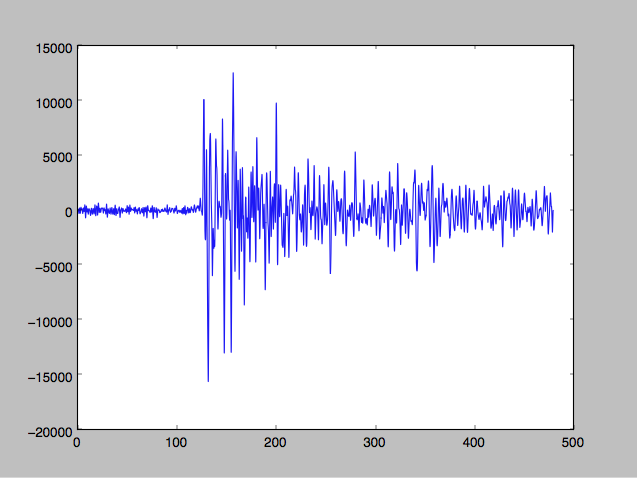
Here is a further explanation of what I’m doing, what kind of data I’m using, and what software I’m using:
Receiver functions can be used to identify azimuthal anisotropy (the same kind of anisotropy shear wave splitting investigates) and dipping layers in the crust through the evaluation of radial and transverse components of P-to-S conversions following the p-wave arrival of a seismic event. Polarity reversals in P-to-S arrivals in the transverse components of receiver functions indicate azimuthal anisotropy and/or dipping layers. Anisotropy is differentiated from simply dipping layers by the pattern of P-to-S arrivals in the transverse component (dipping shows 2 polarity reversals, while anisotropy shows 4 reversals). To do this we are using seismic data from broadband, long-running (>5 years) seismometers along Cascadia (note blog post 1’s map) with data from University of Washington, University of Oregon, and UC-Berkley networks processed through the IRIS DMC in Seattle. For a thorough receiver function study, lots of data is needed. Because of this, stations we’re using have time spans beginning in the range from 1994 to 2000 and ending sometime after 2009. This data is widely used, considering it is freely available through the IRIS DMC. We are starting the study with raw data, although SOD picks key events of data to pull for further use. So far, I have used GMT to help us spatially choose appropriate stations (in addition to JWeed), SOD to get seismograms of events from IRIS, obspy to quality control data, and SAC to get and start processing data. Further into the project, I will use a code called “recfunk09_pick” that uses SAC to apply a multi-taper correlation (a method of calculating receiver functions) to my data.
Week 1: Seeing Seattle and Starting Research
June 4th, 2015
Seattle is beautiful, although there have been a few of the drizzly days from which Seattle gets its reputation. Despite being the biggest city I’ve ever been in, Seattle full of floppy conifers, pretty flowers, and green gardens. Everyone is nice and helpful, although smiling at people you don’t know is a bit taboo here. I am spending my summer living with a couple who are making me feel just like part of their family! Tonight I get to go to my first Seattle contra dance of the summer. I super excited, but I’m a little intimidated by the bus system I need to use get there!
So far, Erin (my mentor) and I have picked seismic stations to use, gotten seismograms from those stations, and are planning to start picking wave arrivals early next week! Eventually, we will use this data to figure some things out about crustal anisotropy along the Cascadia Subduction Zone in Vancouver, Washington, Oregon, and northern California.
Here’s a map I made in gmt of the stations we’re using:
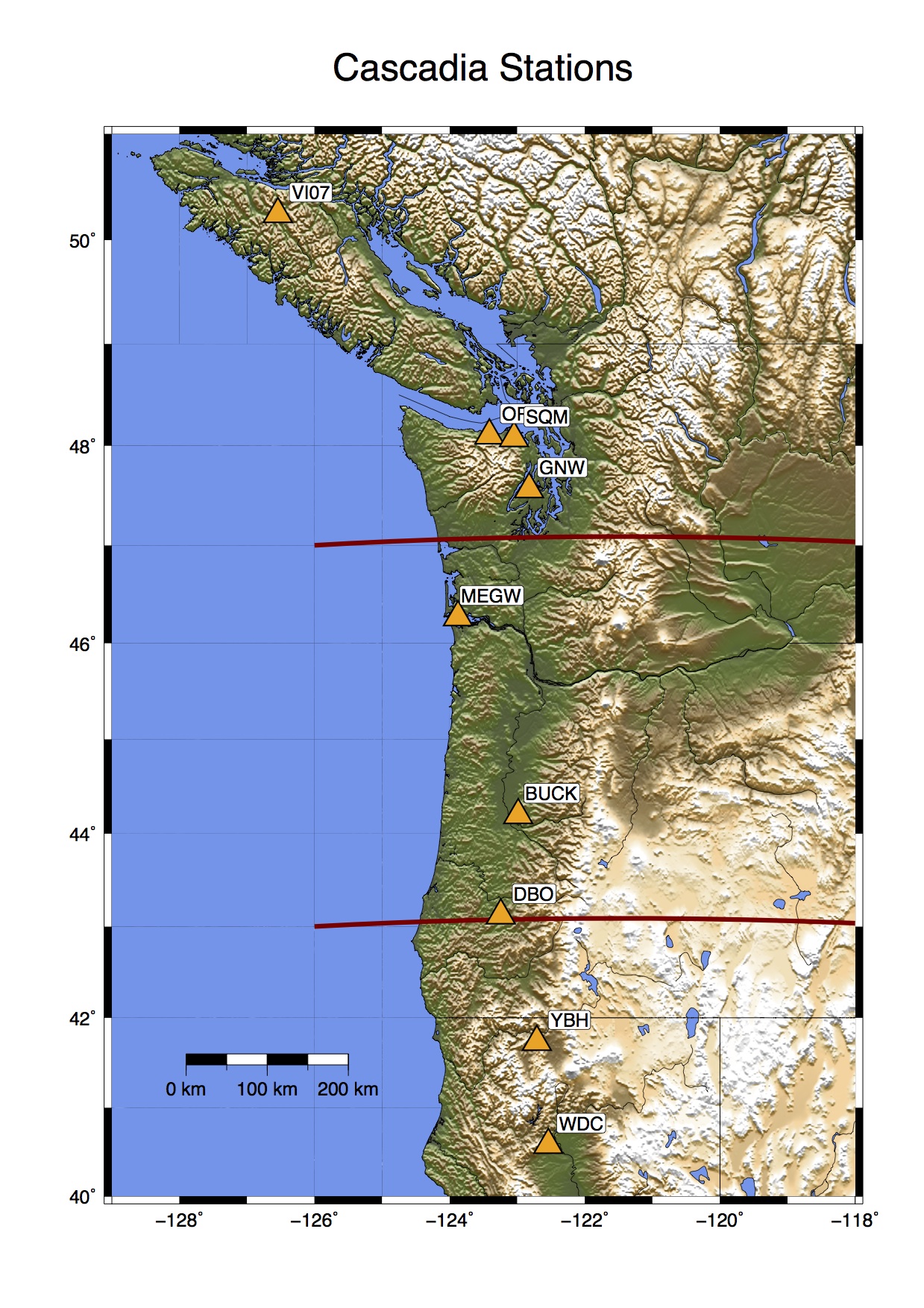
A brief overview of my summer research goals:
During this first third of the summer I will learn to use SAC and EMERALD software as well as start and finish picking wave arrivals. During the second third of the summer I plan to calculate, plot, and start evaluating receiver functions for our seismic stations. During the final third of my summer research I will be figuring plausible parameters to match our calculated receiver functions to help us characterize crustal structure, submit and AGU abstract, and present my summer research to the UW Earth and Spaces Sciences department.
Orientation Week: The first blog entry
May 28th, 2015
IRIS orientation week is flying by! Every day we either hike or do field work in the beautiful deserts of New Mexico that are filled with bizarre ocotillas and cute horny toads. This fun is mixed with a little learning about topics I love from the knowledgeable geophysicists of New Mexico Tech. This week is making me excited to spend the rest of my summer doing this work in Seattle, where it's not quite as dry and hot!